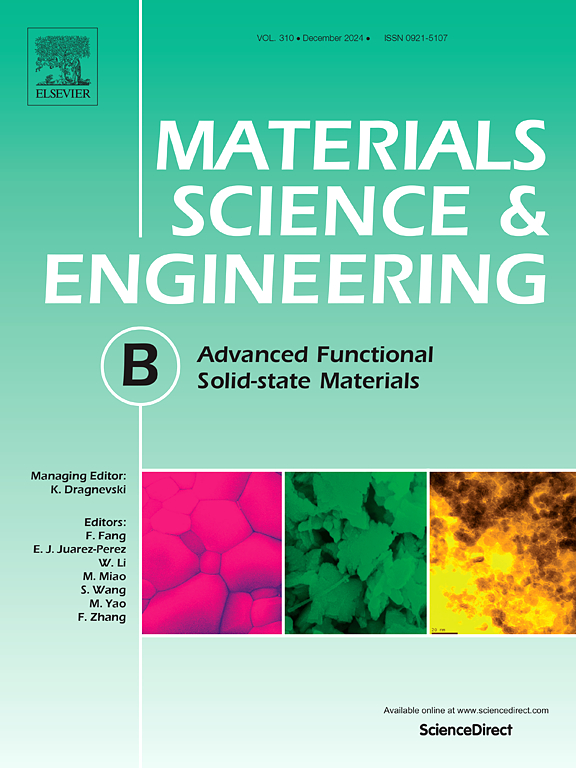Bifunctional Fe/Co-containing PrBaFe2-xCoxO5+δ electrode: Enhanced catalytic properties through modulating the ratio of Fe/Co cations
IF 3.9
3区 材料科学
Q2 MATERIALS SCIENCE, MULTIDISCIPLINARY
引用次数: 0
Abstract
Fe or Co-based perovskites are deemed the promising electrocatalysts in solid-state oxide cells (SSOCs). Herein, B-site Fe/Co co-occupied PrBaFe2-xCoxO5+δ perovskites are developed for catalyzing oxygen reduction/evolution reactions (ORR/OER), demonstrating considerable bifunctional performance. About all compositions, PrBaFe1.7Co0.3O5+δ (PBFC03) possesses the lowest polarization resistance (Rp) (0.085 Ω 2). This performance is reduced by ∼ 32 % than that of Co-free PrBaFe2O5+δ (PBF) (0.125 Ω 2 at 650 °C). When utilized as the cathode, the single cell delivers a maximum power density (MPD) of 1.18 W cm−2. In the electrolysis model, the current density (J) reaches ∼ 3.9 A cm−2 at 1.8 V toward CO2 reduction reaction (CORR). Combined with experimental and theoretical studies, such properties are attributed to enhanced electronic transfer and improved O2 dissociation through doping the Co ions into PBF. The results highlight the importance of active Fe/Co sites for the electrocatalysis reaction, untangling the fundamental origin of bifunctional activity.

求助全文
约1分钟内获得全文
求助全文
来源期刊

Materials Science and Engineering: B
工程技术-材料科学:综合
CiteScore
5.60
自引率
2.80%
发文量
481
审稿时长
3.5 months
期刊介绍:
The journal provides an international medium for the publication of theoretical and experimental studies and reviews related to the electronic, electrochemical, ionic, magnetic, optical, and biosensing properties of solid state materials in bulk, thin film and particulate forms. Papers dealing with synthesis, processing, characterization, structure, physical properties and computational aspects of nano-crystalline, crystalline, amorphous and glassy forms of ceramics, semiconductors, layered insertion compounds, low-dimensional compounds and systems, fast-ion conductors, polymers and dielectrics are viewed as suitable for publication. Articles focused on nano-structured aspects of these advanced solid-state materials will also be considered suitable.
 求助内容:
求助内容: 应助结果提醒方式:
应助结果提醒方式:


